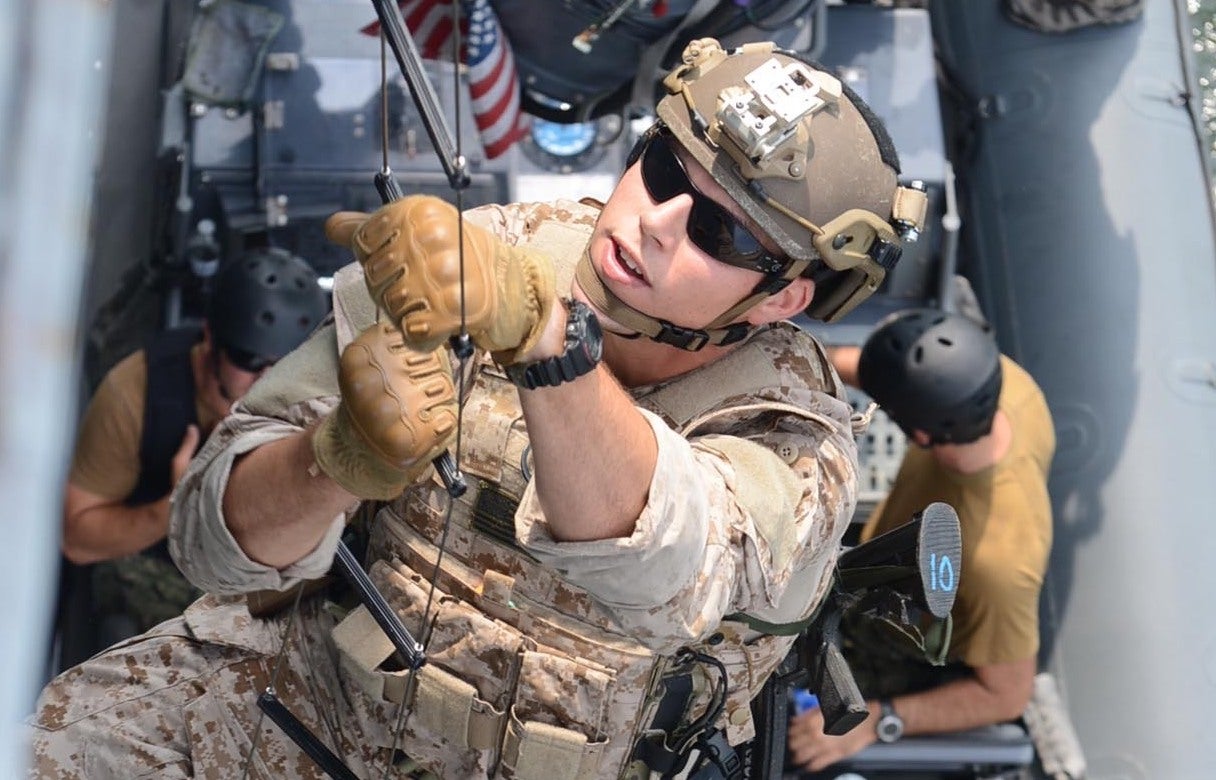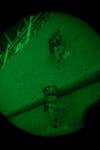MATT WHITE

A Navy SEAL who spent a dozen years in the elite combat units said the “sketchiest” training of his career was intercepting a ship and boarding it at night — the tactic at the heart of the mission from which two SEALs went missing Thursday when their team boarded a ship in the waters off of Somalia looking for Iranian weapons.
The high-risk tactic, known as Visit, Board, Search and Seizure, or VBSS, puts SEALS in a uniquely dangerous, exhausting and miserable spot, the veteran SEAL told Task & Purpose.
“It’s the sketchiest thing I did in the teams,” he said. “Everything is slippery, it’s dark, everything is moving, it’s f**king cold so you can’t feel sh*t.”
And a misstep at any moment could send a SEAL into the black ocean below.
Several other former SEALs who spoke to Task & Purpose echoed those sentiments, roundly describing VBSS ops as among the more dangerous — and just outright miserable — skills that SEALS practice.
The 12-year SEAL said he was more anxious doing VBSS operations than he was during HALO jumps, the practice of freefall parachuting, usually at night, with perhaps 100 pounds of gear attached.
“It’s sketchier than HALO,” he said. “The only other time I felt similar was fast-roping from an Osprey. The rope shoots out 45 degrees and you’re barely hanging on with hundreds of pounds of gear and if you fall it’s 50 feet to the ground. That’s the only other time I felt the kind of sketch I did doing VBSS.”
The Navy and U.S. Central Command have not released significant details on the January 11 Somalia mission and none of the SEALs that Task & Purpose spoke with were aware of any details of the raid.
But all agreed on two points: SEALs receive excellent training and equipment for the dangers of a VBSS mission; and despite those advantages, any number of things can go instantly wrong.
Dark, cold, and slippery in 8-foot waves
The most dangerous moment of a VBSS raid, all agreed, comes during the initial boarding, often after a punishing, hours-long ride in a specially built speed boat or inflatable raiding boat. In often-rolling seas, SEALs climb from their boat onto the side of the target, often using a caving ladder, little more than a rope with handles. Several raiders at once might be on a ladder, clinging to wet bars a dozen or more feet in the air, as waves crash off the target boat and batter the SEAL’s own delivery boat.
A single slip could put a sailor, or several sailors, into the water, where they face the prospect of being lost in the dark or even pulled under one of the two boats
.

Navy SEALs from Naval Special Warfare Group 2 climb a ladder to conduct VBSS April 6, 2022.
Though most of the gear SEALs use on VBSS missions is designed to have neutral buoyancy, the SEALs said, and several kinds of flotation devices are issued for water missions, weapons and ammo generally don’t float. And even if a SEAL’s gear does not sink, he might still become hopelessly entangled or find his inflatable lifesaving equipment working against him if it is not rigged correctly.
“Even if you’re neutrally buoyant, you have to train with it, make sure that you’re going to float with your head above the water, even if you’re unconscious,” the former SEAL said.
Going after a swim buddy
According to some news reports, the two SEALs disappeared in 8-foot swells as the team tried to board the boat, which was suspected of smuggling Iranian arms to Houthi rebels in Yemen. After one SEAL fell into the water, a second dove in to help, reports say.
Neither were spotted again by their team.
What to do when a team member falls in the water, the SEAL said, would likely be an emergency the team had rehearsed or at least discussed in preparation for the raid. Each member of the team would likely have instructions, assigned by a team leader, on what to do if a SEAL fell in, including any crew of the combatant craft the team traveled on.
But even if jumping in after a teammate was not a pre-agreed upon action, it would be a hard instinct to suppress for many SEALs.
“From the f**king moment you step on the grinder, the primary directive of a frogman is [to look out for] your f**king swim buddy,” he said. “Moving boat to moving boat is sketchy, and if he slipped and hit his head, maybe you’re the only dude that saw it and knows he is out, and you think ‘I gotta go, I gotta do it.’ It’s incredibly reasonable that another SEAL would dive in after him.”
Special Boat Teams
SEAL VBSS missions can come in several shapes and sizes but all have roughly the same script: riding in a small boat, a team chases down a larger boat — usually in the dark — climbs aboard and seizes control, fighting or overpowering crew that resist and detaining those who don’t.
Special operations units in both the Marine Corps and Coast Guard also train to execute VBSS missions.
SEALs use a wide range of boats for VBSS and other missions, all of which present unique capabilities and unique challenges.
For remote attacks, a small team of SEALs can parachute into open water with a small inflatable rubber raiding craft, which they can inflate in the water to attack a nearby ship. But such small boats are slow, carry very little fuel and offer little protection from heavy seas.
For longer range missions over open water, SEALs ride in specially designed combatant craft operated by Navy Special Boat Teams. Such boats vary from speed-boat like Combatant Craft Assault to large, stealthy Combatant Craft Heavy boats. All are manned by specially trained Special Warfare Combatant Crewmen
.

Two Combatant Craft Assault boats.
But whether big or small, the boats deliver infamous punishment to passengers as they ride, pounding occupants for hours as they pursue a target.
“You never see a senior boat guy who doesn’t have a bad back,” said the SEAL. “I remember one training event just in San Diego, I was riding in the bow of the Zodiac for something like four hours, getting hit on every wave. For the next three or four or five days, I could taste nothing but battery acid in my mouth because I had such a bad concussion.”
The beating SEALs take in their own boat, he said, can linger as they attack their target.
“You’re smoked,” he said. “This is why we do what we do, train as hard as we do, so you can show up to the X after the insert for the mission. But at the same time, humans are still humans, and any one of these things will be hard. You pile them up together, the cumulative effect is just absolutely destroying your body. The only way to reduce the damage [in the combatant crafts] is to slow down, and that is the one thing you absolutely cannot do.”
No comments:
Post a Comment